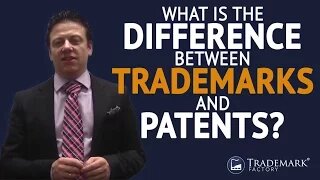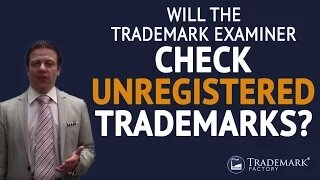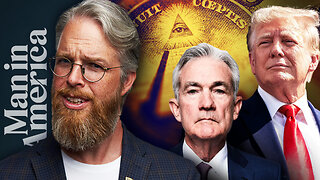Premium Only Content

What Is the Difference Between Trademarks and Copyright? | Trademark Factory® FAQ
Trademark your brand at https://trademarkfactory.com/advisors/youtube
What Is the Difference Between Trademarks and Copyright?
Those of you who’ve listened to my story, who know my story, you would know that I started as a copyright lawyer to help my dad protect his rights on the music he wrote against the radio station that stole his music to make an ad out of that for Samsung. Now I am the founder of Trademark Factory where all we do is trademarks, so sometimes we get people confused. What is what and what protects what?
So here is the thing.
Copyright protects content. It protects music, video, books, texts, software, images, photographs—everything that allows you to express some idea in a way that is capable of being perceived by others: a book, a movie, a YouTube video, a software, whatever it is. So what copyright protects is the actual way you expressed that idea, not the idea itself.
The perfect example is this video what you are watching right now. It is protected by copyright. I shot it, I am saying the words what you are listening to, I own a copyright in it. But if there was somebody else, who wanted to share the same idea about the difference between copyright law and trademark law, just because I shot this video wouldn’t stop them. It doesn’t make it illegal for them to make a similar video. What would stop them from doing is transcribing this video and just saying the same words in their video.
So that’s what copyright is about.
Trademark is not about content, it is about the way your market identifies your product and service—it can be the name of the product, name of the company, name of the service, a logo, a tagline. So really, anything that allows the market to tell your products and services apart from identical products and services of everyone else.
And usually, there is very little overlap between copyright and trademarks, but there is an important instance when there is an overlap. And that is logos. A logo, by definition, is an image that can be protected and is usually protected by copyright, and you can also trademark that logo. So you can’t copyright a single word, or you can’t copyright a phrase or slogan, but you can trademark them, so there is no overlap for wordmarks. But for logos, there is this overlap.
And the reason why this is important is this. If you did not draw that image or design yourself and you had somebody else do it for you and they would own copyright in the image, even if you go to the Trademarks Office and trademark that. So it is important for you to make sure that you own the right not just to the logo from the perspective of trademark, but also copyright from the perspective of your arrangement with the artist or the designer who did this for you.
So make sure you have an agreement in writing that would state that you own the image, that you own copyright, that you are allowed to trademark it, that you are allowed to use the image however you want—and this will make it a lot easier for you if the business grows. It will make sure that nobody can go after you and demand money and demand something that you don’t want to deal with as the business grows.
-----------------------------------
Trademark Factory® resources:
★ Website: https://trademarkfactory.com ★
☆ YouTube Channel: https://youtube.com/trademarkfactory.com ☆
★ Facebook Page: https://facebook.com/thetrademarkfactory ★
☆ Twitter: https://twitter.com/realTMfactory ☆
★ Kick-Ass Brands Show: http://kickassbrandsshow.com ★
☆ Kick-Ass Brands Facebook Group: https://www.facebook.com/groups/kickassbrands ☆
-
 3:54
3:54
Trademark Factory® - How to Trademark Your Brand
3 years agoWhat Are Ornamental Trademarks? | Trademark Factory® FAQ
16 -
 5:09
5:09
Trademark Factory® - How to Trademark Your Brand
3 years agoWhat Is the Difference Between Trademarks and Patents?
68 -
 11:44
11:44
Trademark Factory® - How to Trademark Your Brand
3 years agoWhat is a trademark? | Trademark Factory® FAQ
7 -
 3:22
3:22
Trademark Factory® - How to Trademark Your Brand
3 years agoWill the Trademark Examiner Check Unregistered Trademarks? | Trademark Factory® FAQ
36 -
 11:44
11:44
Trademark Factory® - How to Trademark Your Brand
3 years agoWhat Makes Trademark Factory® Different?
83 -
 3:12
3:12
Trademark Factory® - How to Trademark Your Brand
3 years agoWill the Trademark Examiner Check Other Applied For Trademarks? | Trademark Factory® FAQ
12 -
 3:20:54
3:20:54
Fresh and Fit
6 hours agoExposing WHO Killed JFK w/ Cory Hughes & Tommy Sotomayor
81.8K27 -
 2:41:29
2:41:29
RanchGirlPlays
6 hours ago🔴 Red Dead Redemption: Let's go help De Santa 🤠
4.62K1 -

Man in America
13 hours agoWHAT?! Trump & the Fed are DISMANTLING the Global Banking Cartel!? w/ Tom Luongo
22.3K5 -
 2:00:29
2:00:29
HELMET FIRE
3 hours agoDEADROP IS BACK!
4.93K2